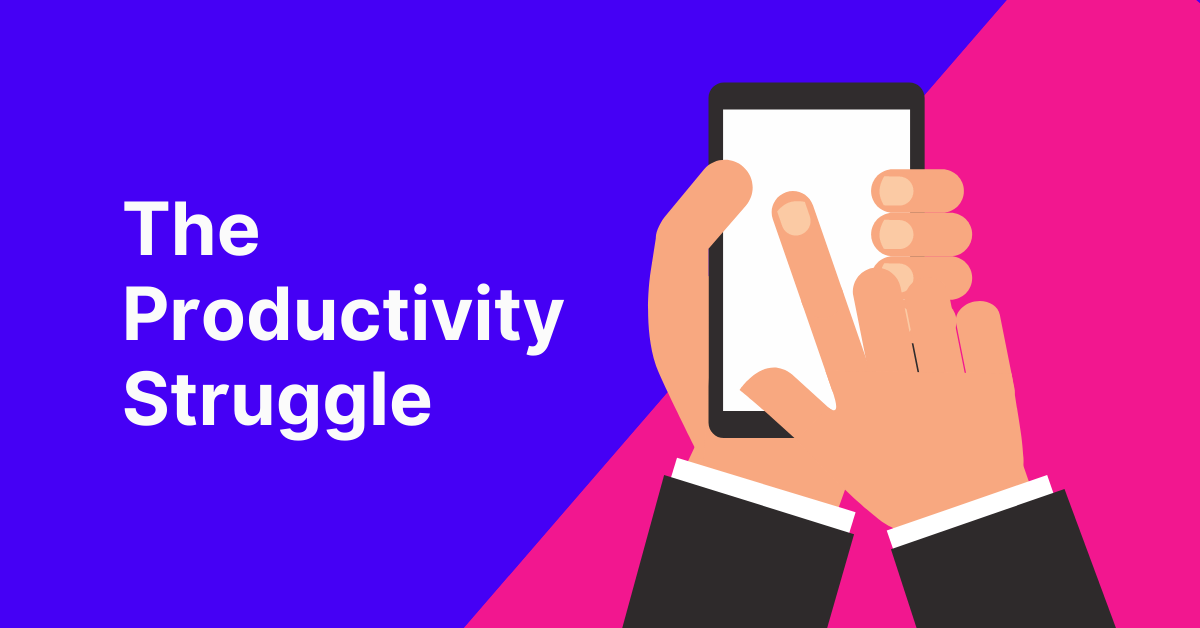The word “productivity” is thrown around a lot lately, especially when we look at remote work stats. A lot of people say they are more productive when working remotely. But how to measure productivity?
It’s a statistic that you’re likely to find in almost any remote work-study and is a common benefit associated with working outside the office. At a basic level, we usually look at the amount of work completed within a timeframe such as a day. Then, it’s compared to other people in the company or to a previous time to understand any differences in productivity.
External and internal factors
We don’t always run at the same level of productivity. Even if we want to, it just won’t happen. The longer we work, the less productive and tired we become. It’s a struggle to always stay on track and at full speed, but what are the reasons for this? We can usually split productivity pitfalls into two different categories: internal factors and external factors.
Internally, we have a lot going on in our minds that can really slow down our productivity even when we don’t want it to. We already mentioned previously working long hours and becoming tired. A lack of direction in your tasks is also a common reason for us not working at the level we want to be.
Working on large or difficult projects will provide you with a clear end goal, but the way you get there and the direction you have might be unclear. Without a solid plan, your productivity crashes as you try to figure out exactly what you should be doing. Working on a task that is too difficult can also lead to procrastination in avoidance of the task.
Externally there are also a lot of things that can slow down your productivity. The world is now truly global, online, and always available at the touch of a button. Unfortunately, so are all of us! Technology provides some of the biggest distractions nowadays. Social media sends us notifications directly to our lock screen and our phones receive a huge amount of messages a day.
Working from home productivity myths
There is a lot of good and bad press when it comes to remote work productivity. So let’s get the facts straight! One of the many reasons that workplaces shy away from remote work is the idea that their employees will slack and be less productive. Without being in the office, there is no one to supervise, or make sure that you aren’t actually watching TV or relaxing in bed. Luckily this is one myth that we can bust straight off the bat.
When it comes to remote work studies, productivity gains are one of the most reported benefits of working from home. A 2 year study from Stanford university showed that work from home employees got in an extra day’s work over their colocated colleagues. This all comes from a combination of taking shorter breaks, less sick days, and much less time off. Also, it’s a lot more difficult to be late to work when your office is at home!
Another myth that comes up a lot is that working from home is in fact more distracting. When you have direct access to all your home comforts, what’s to stop you so easily from using them when you should be working? Fortunately again for us remote workers, the reality is actually a bit different.
An Airtasker study involving over 1000 workers reported that office workers lose on average 37 minutes a day to distractions (outside of their breaks), compared to only 27 minutes for remote workers. What we often forget is that the office is full of distractions too, and perhaps the biggest distraction of all: your coworkers!
One last myth to address is that remote workers often take longer breaks, work less hours, and are therefore less productive. The freedom to work the hours that suit you and the flexibility of remote work are actually productivity drains… or so they say.
While it’s often true that the amount of hours worked are less than office counterparts, there are a few reasons for this. First of all, when your task is complete, you can usually just finish your day. Working a 9-5 often isn’t that flexible. Therefore the same task can be done in less hours worked.
A RescueTime report also shows that per year, remote workers spend 67.8% of their time on core work, but office workers 63.1%. Remote workers also spend 18% less time on communication than workers in the office too. Overall this adds up:
“Over 261 working days (the annual average), remote workers average:
58 more hours spent on core work
256 fewer hours spent on communication”
Overall, we’re working less hours, but spending more time on the important stuff that needs to get done. As remote workers, we’re working in a much smarter way. Less hours, more work, and greater productivity!
Is productivity earned?
It’s great news all round when it comes to productivity and remote work. But we can’t just take it for granted. Making sure you hold yourself accountable and deal with the internal factors that affect productivity is also key.
External factors will come up and interrupt you during your work, but it shouldn’t be as big a deal if you are also looking internally for what improves your work flow. Nevertheless, without all the distractions of the office and other people to throw you off track, you generally can expect to get more done at home in a shorter time with all else being the same!
We’ve tried to combine the best of both worlds, so that we can work from home and take from the office the good parts that can actually boost productivity.

